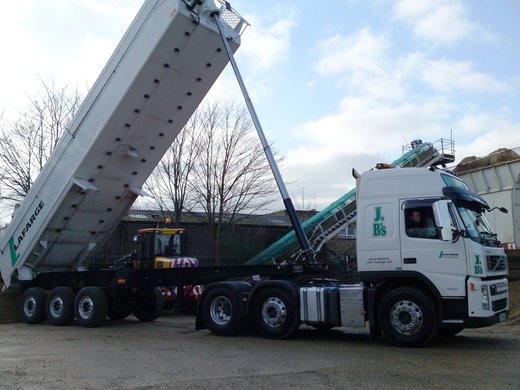9 April 2014
The world’s two largest cement makers agreed the terms of takover on Monday, after three months of negotiations. Although bolth companies described the deal as a “merger of equals”, Swiss company Holcim will buy its French rival Lafarge by exchanging one of its shares for each of Lafarge’s.
The new company will be based in Switzerland and be listed in Zurich and Paris. Bruno Lafont, the chief executive of Lafarge, will take up the same role in the combined group; Holcim’s chairman designate Wolfgang Reitzle, will become group chairman.
When the deal is finalised, it will create the world’s largest construction plc, with combined sales of close to $60bn.
In a conference call with journalists, the companies’ executives said two groups had a good geographical fit, with Lafarge stronger in Africa and Holcim stronger in Latin America.
Altogether Holcim Lagarge will have a presence in in 90 countries, with emerging markets such as Latin America and Africa accounting for 60% of sales, but with no single country representing more than 10%.
To avoid regulatory challenges in countries where both firms have subsidiaries, about $5bn worth of businesses will have to be sold. Among the 13 or so countries affected are France, Spain, Canada, the Czech Republic, Brazil, Ecuador, Morocco, the Philippines and Madagascar.
The UK industry will also be affected, as Holcim is the parent company of Aggregate Industries and Lafarge owns Tarmac.

Lafarge, the company being bought in the “merger of equals”, was founded in 1833 and operates through more than 1,000 subsidiaries around the world (Dan Davison/Wikimedia Commons)
Even so, the complexity of the competition issues are such that the regulatory process may take up to two years to complete. An additional factor is the cement industry’s history of malpractice: European antitrust compition authorities fined Lafarge for price-fixing in 1994 and in 2002.
The European Commission opened another investigation into several cement producers in December 2010; this is still continuing, and Lafarge and Holcim are among the companies being looked at.
The deal is being seen by industry commentators as the first in a round of takeovers and acquisition as firms position themselves to take advantage of a return in demand, and to fend off the challenge of the Holcim Lafarge combine.
Ian Osburn, an analyst at Cantor Fitzgerald, told The Financial Times that the construction materials sector was now “open” for mergers and acquisitions.
He said: “This is normally the most attractive time to do it at the start of the upswing and some of the other global majors may be feeling in a weakened position trying to compete with Holcim Lafarge.”
The Belgian holding company Groupe Bruxelles Lambert is Lafarge’s largest shareholder, with a 21% stake. It has said it would support the deal and would hold about 10% in the combined group after the transaction was completed.
Other major owners are Egyptian tycoon Nassef Sawiris, who has a 16% stake in Lafarge; Swiss entrepreneur Thomas Schmidheiny and Russian businessman Filaret Galchev control a total of 31% of Holcim.
The transaction has the support of core shareholders and is expected to close in the first half of 2015, the companies said.










